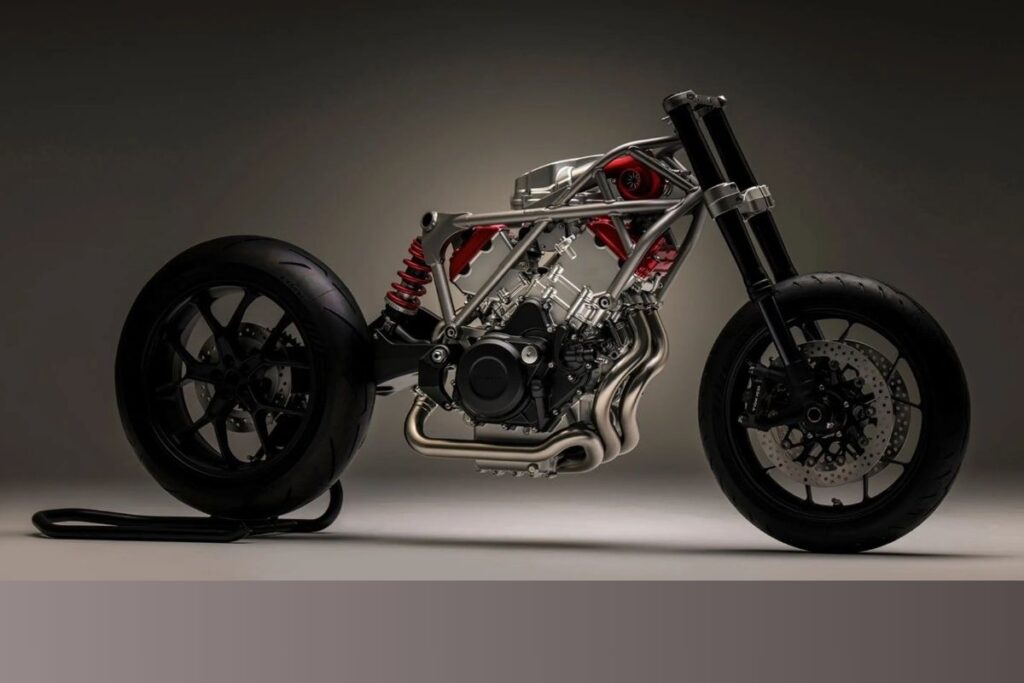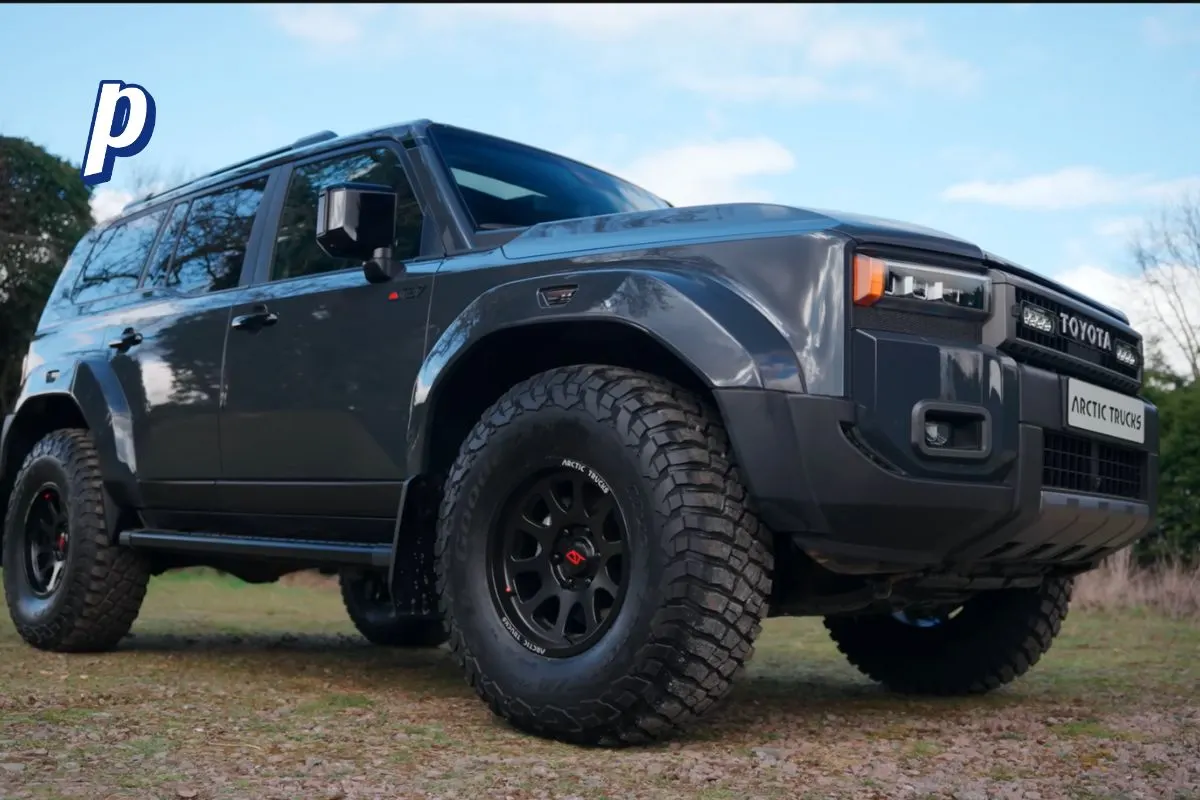Perhaps forced induction will dominate the future of motorcycling if electrics aren’t ready to take over just yet. At EICMA, Honda recently unveiled a cutting-edge large-capacity V3 combustion engine equipped with an electric supercharger.

Just after lunch on Tuesday, the Japanese behemoth unveiled a brand-new platform: a small V3 4-stroke engine. It was displayed in a stunning tubular trellis frame with red accents on the two front cylinder heads, one rear cylinder head, and the tiny electric compressor snail peeking through the frame above the front heads.
With gorgeously curled exhausts that would look fantastic in a nude environment and a conveniently accessible oil filter off to the left, it is slender—barely wider than the forks. However, front-bank valve clearances will be difficult.
Although there are no radiators visible on the presentation chassis, the whole system is water-cooled, with the pistons positioned at a 75-degree angle. The electric compressor, which is specifically made to increase torque at low and medium rpm, is a first for this type of application.
Honda’s e-compressor is powered by a battery, whereas superchargers are powered directly from the engine’s output shaft and turbochargers are powered by exhaust gas pressure. The ECU may now drive as much air into the intakes as it desires at any one time, fully decoupling it from engine speed. The experts at Honda may utilize this to adjust it for various efficiency and performance advantages, or to entirely eliminate any latency while waiting for the boost to start.
Comparing the total system’s efficiency against that of conventional belt-driven superchargers, which use a significant portion of an engine’s power at low rpm before spinning up and contributing, would be fascinating. This bike will require a far higher energy output from its alternator and most likely a larger battery to run this compressor, so Honda still needs to find a way to power that snail.

Although electric superchargers are often less efficient than those powered directly by the motor due to the losses incurred during the conversion of mechanical energy to electrical energy and back again, the overall riding experience may still be better in this case.
The V3 E-compressor is extremely tiny and was designed from the ground up. As per Honda’s statement, the engine is “being newly developed for larger displacement machines,” and its uses range from street and touring vehicles to machines that are more focused on racing. If it’s as finely tuneable as it appears, it may even find usage in the adventure industry.
read more: Meet the Flying Flea C6: A New Era in Electric Motorcycling
But keep in mind that this is still only an idea. It is not guaranteed to be used in the Fireblade just because it is seen mounted on a chassis with tires that have a width of 200/55. Honda won’t make the location of its first use of this device public for some time.
Its cylinder arrangement is identical to that of the NS400R 2T, a unique two-stroke triple that caused a stir over 40 years ago. It will also be one of the few forced-induction production bikes available on the market, including Kawasaki’s frightening H2.
The goal here is, in fact, output. A press statement from the firm states that Honda views the creation of this V3 engine with an electrical compressor as a novel challenge in the field of internal combustion engines and that its objective is to help consumers further enjoy the pleasures of riding and owning a motorbike. Additionally, Honda said that the “development will continue towards mass output” of this new three-cylinder idea.








